Facelift in Marrakech
Search and Compare the Best Clinics and Doctors at the Lowest Prices for Facelift in Marrakech
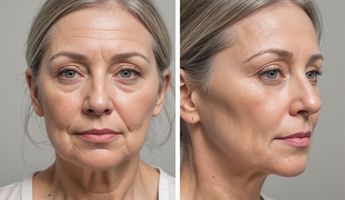
Find the best clinics for Facelift in Marrakech
With Medijump you can browse 2 facilities offering Facelift procedures in Marrakech. The cheapest price available is $1,828 in Casablanca. And for the cheapest price globally, prices start from in .
Facelift in Morocco
Price: $ 1,828
Facelift in Casablanca
Price: $ 1,828
Facelift in Marrakech
Price: $ 2,134
From 14 verified reviews
Osp Global, 03 December 2019
Excellent service with professionalism .Dr HASSAN EL GBOURI he did for me PRP and hair transplant it’s fantastic thank you Ms said I respect your work
From 13 verified reviews
Montse Alconchel Ruiz, 25 March 2020
I need you to send me your email, I was in the hospital last Saturday March 7 doing some tests and I have lost the medical report they gave me, I have tried to call them by phone several times but there is no way. my email [email protected] my name Montserrat AlconchelAdmission number 200308164407WK-001
Compare Before & After Photos of _procedure_photos.phpFacelift


Front view


Half-side view


Full-side view
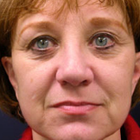
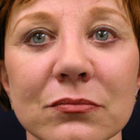
Front view
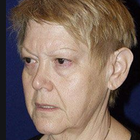
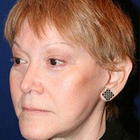
Half-side view
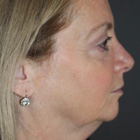
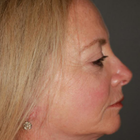
Full-side view

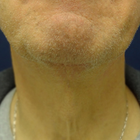
Front view
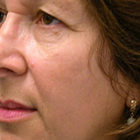
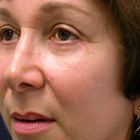
Half-side view
WHY US?
At Medijump, we're making medical easy. You can search, compare, discuss, and book your medical all in one place. We open the door to the best medical providers worldwide, saving you time and energy along the way, and it's all for FREE, no hidden fees, and no price markups guaranteed. So what are you waiting for?

Free

Best Price

Widest Selection

Risk-Free
What you need to know about Facelift in Marrakech

A facelift, also referred to as rhytidectomy, is a cosmetic surgery that aims to restore a more youthful facial appearance. It can reduce sagging or folds of skin on the cheeks, jawline, and other areas in the face that changes shape due to aging.
As we age, our skin loses their elasticity and become looser. Fat deposits also decrease in some areas and increase in others. This leads to sagging and wrinkles. With a facelift, these problems can be addressed by lifting and tightening the sagging facial tissue. The procedure may involve removing excess skin that’s causing “jowls”, smoothing out wrinkles or folds, and tightening facial tissue. It can also have a rejuvenating effect on the areas below the eyes and the deep lines from the corners of the mouth to the sides of the nose.
It is important to bear in mind that a facelift is not a treatment for creases around the nose, superficial wrinkles, and irregularities in skin color. It also cannot stop the aging process or change your fundamental appearance.
Although there are newer and less invasive facial rejuvenation procedure, a surgical facelift is still one of the most popular today. This is because the procedure offers the most dramatic results.
What is the cost of Facelift in Marrakech?
Many people take into account the cost of a Facelift in Marrakech very carefully because it differs greatly from one area or clinic to another. But the typical price normally includes the surgeon's fee, the facility fee, the cost of anaesthesia, and any required pre-operative diagnostics. The complexity of your case, the surgeon's experience, and his or her reputation all have a role in the procedure's ultimate cost, which is important to keep in mind. Remember that these expenses are an investment in your self-worth and personal fulfilment and could have a big impact on your quality of life.
What does a Facelift Procedure Involve?
In terms of aesthetics, your surgeon will recommend the best choice for your own comfort. You may
There are three types of incision used in a facelift, which depends on the degree of change you would like to see and the technique your surgeon will use.
- A traditional facelift incision starts at your temples in the hairline, continues around the ear and ends in behind your neck in the lower scalp. An incision may also be made under your chin to improve the look of the neck.
- A limited incision is shorter than traditional facelift incision. It starts in your hairline just above the ear, continues around the ear but does not extend to the lower scalp.
- Neck lift incisions begin in front of the earlobe, continues around your ear into the lower scalp. This type of incision addresses the sagging jowls, fat accumulation under the chin, and loose neck skin.
In general, your surgeon elevates the skin and tighten the underlying tissues and muscles after making an incision. Fat in your face and neck may be removed, sculpted, or redistributed. Then, the incision is stitched.
How Long Should I Stay in Marrakech for a Facelift Procedure?
You should be able to leave the hospital on the same day of the surgery if local anesthetic is used. However, if the surgery is done under general anesthetic, you may need to stay in the hospital for about 1 to 2 days. You should plan to stay in Marrakech for around 7 to 10 days following the surgery because you will have to attend follow-up checkups. During the checkups, your surgeon will monitor your healing and remove your stitches.
What's the Recovery Time for Facelift Procedures in Marrakech?
While recovering, it is beneficial to prop your head up and refrain from any heavy-duty tasks. Healthy eating habits and effective stress control can remarkably assist in your recuperation journey. A complete healing span could last for a few months, during which the puffiness slowly eases off and the cut marks become less noticeable. Diligently adhering to the post-surgery guidelines from your doctor and consistently showing up for all scheduled check-ups can contribute to a swift, seamless recovery.
Expect to experience bruising, swelling, and some discomfort for the first 3 to 5 days. You may be able to return to work and some light activities within 7 to 14 days, but avoid any vigorous activities for about 5 to 6 weeks. It may take 2 to 3 months until your face feels normal in terms of texture and sensibility.
What sort of Aftercare is Required for Facelift Procedures in Marrakech?
Your surgeon will provide detailed post-operative instruction. To avoid any complications and maximize the result, you need to follow all instructions closely. You may have to avoid any clothing that is pulled over the head, such as t-shirts and sweaters. You should also avoid using makeup and direct sun exposure for about three weeks, as well as coloring, bleaching, or perming your hair for six weeks following the surgery.
To maintain the results of your facelift, you need to avoid smoking, use sunblock, moisturize your face daily, maintain weight stability, follow a healthy diet plan, exercise regularly, and live a generally healthy lifestyle.
What's the Success Rate of Facelift Procedures in Marrakech?
Approximately 80% to 90% of people who had a facelift is reported to achieve a positive result after their procedure. However, although great results are expected after a facelift, there can be no guarantee. In some cases, you may need more than one surgery to achieve your desired result. To make sure your surgery is successful; you need to ensure your surgeon is skilled and experienced. You also have to follow your surgeon’s instructions, from the preparation to the aftercare.
Note that the results of a facelift are not permanent because no cosmetic procedure can stop aging. Your facial skin may begin to droop again as you age. The average facelift lasts between 7 and 10 years before you have aged enough to need additional work.
Are there Alternatives to Facelift Procedures in Marrakech?
If you do not want to (or cannot) undergo a facelift, you can opt for an alternative.
- Mini-facelift - a less invasive procedure that also aims to lift the wrinkles and sagging skin in the lower part of the face. Because it involves a smaller, s-shaped incision around the ear, it cannot address neck sagging or excess skin.
- Botox - it reduces the appearance of wrinkles and usually takes about 24 to 72 hours to take effect. A botox injection uses botulinum toxin to temporarily paralyze muscle activity.
- Fillers - unlike botox, fillers fill the line, crease, or the general facial area with different kinds of substances. These fillers can be used as “volumizers”, plumping and lifting your cheeks, jawline, and temple.
- Laser Skin Resurfacing - this works to give you a younger-looking facial skin by removing some skin layer by layer. Patients can get rid of scars, wrinkles, acne marks, and blotches.
- Ultherapy - this uses ultrasound to heat targeted tissue under the surface of your skin. The heat will then trigger the natural production of collagen. This procedure can be repeated 6 to 12 months because collagen usually takes very long to develop.
- LED - light-emitting diode therapy uses a variety of different colored lights to target various parts of your face. This is a pain-free procedure that treats acne, fine lines, wrinkles, pigmentations, acne scars, and rosacea.
What Should You Expect Before and After the Procedure
Before having the Facelift, you will meet with your surgeon to discuss your goals and what you expect to accomplish. Your medical history will be carefully reviewed at this meeting to ensure that the procedure is safe for you. Before the surgery, you might also need to get some routine health screenings to make sure you're in good health overall.
Expect to have bandages applied to your surgical wounds following the Facelift, and it's possible that a drain may be installed to collect extra fluid. Swelling and bruising are normal postoperative side effects, but these should progressively go away over a few weeks.
What are the Potential Risks of Facelift?
As with other surgical procedures, a facelift can carry some possible risks and complications, which may include:
- Hematoma
- Scarring and skin loss
- Hair loss
- Nerve injury (temporary or permanent changes in facial sensation or difficulties in moving facial muscles)
Some of these risks can be managed with appropriate care and medication. However, you need to be aware of the long term and permanent complications. While they are rare, they may alter your appearance significantly.
Whilst the information presented here has been accurately sourced and verified by a medical professional for its accuracy, it is still advised to consult with your doctor before pursuing a medical treatment at one of the listed medical providers
No Time?
Tell us what you're looking for and we'll reachout to the top clinics all at once
Enquire Now

Popular Procedures in Marrakech
Prices Start From $108

Prices Start From $1,945

Prices Start From $672

Prices Start From $275

Prices Start From $108

Recommended Medical Centers in Marrakech for Facelift

- Interpreter services
- Translation service
- Religious facilities
- Medical records transfer
- Medical travel insurance
- Health insurance coordination
- TV in the room
- Safe in the room
- Phone in the room
- Private rooms for patients available

- Interpreter services
- Translation service
- Religious facilities
- Medical records transfer
- Medical travel insurance
- Health insurance coordination
- TV in the room
- Safe in the room
- Phone in the room
- Private rooms for patients available

- Interpreter services
- Translation service
- Religious facilities
- Medical records transfer
- Medical travel insurance
- Health insurance coordination
- TV in the room
- Safe in the room
- Phone in the room
- Private rooms for patients available
Facelift in and around Marrakech
About Marrakech
Located to the north of the foothills of the Atlas Mountains, Marrakech is the fourth largest city in the Kingdom of Morocco. Found nearly a thousand years ago, this city is where Africa, the Middle East, and Europe fuse into one. It is widely known as the red city because of its famous red walls, alleys, and plazas. The city offers a rare opportunity for tourists to immerse themselves in culture, where modern and ancient merge in a perfect balance. Just like many Moroccan cities, the medina in Marrakech is too beautiful to be missed.
Marrakech has the perfect environment for relaxing and rejuvenating, which is one of the reasons why many medical tourists seek health treatments in this beautiful red city. The medical facilities in the city offer outstanding quality with the latest technology and a wide range of treatments. Healthcare in this city is considerably cheaper than in Western countries and many people are also attracted to Marrakech because it is known to excel in modern plastic surgery. The most sought-after procedures are liposuction, nose jobs, breast lifts, and ear surgery. Other treatments such as dental care, spa, and wellness are also popular.
Popular Areas in Marrakech
This exotic city has everything for everyone, whether you want to indulge in its culture and history or have a luxurious and modern vacation.
- Djemaa El Fna is the most famous square in Morocco that attracts tourists from all around the globe. Often referred to as the heart of Marrakech, the square is a thrilling place to go shopping and get a closer look into the Moroccan culture. However, the real excitement starts when the sun sets and the square is transformed into an Arabian fantasy. It will be filled with fortune tellers, snake charmers, monkeys, and musicians, making it an interesting place to have fun and experience new things.
- Ali Ben Youssef Medersa is the largest madrasa in Morocco and one of the most important in North Africa. Built around 500 years ago, the Quranic learning center still retains its splendid beauty. It is said that up to 900 students have lived in the building to study law and theology. In 1960, it was turned into a museum and one of the most popular sights in Marrakech. Tourists can enjoy a striking view of architecture and decoration as its wall and columns have astonishing carvings, the large patio is made of marble, and the inner courtyard is decorated with mosaics.
- Musée Yves Saint Laurent is a must-visit for any fashion enthusiast and the museum exhibits selected masterpieces of haute couture clothing and accessories made by the legendary French fashion designer Yves Saint Laurent from 1962 until his retirement in 2002. Designed by Studio KO, the building itself is impressive with terracotta brick and earthen-colored terrazzo. The museum consists of a 150-seat auditorium, bookstore, a research library, and a terrace café.
- The Bahia Palace means brilliance in Arabic and it is a fascinating well-preserved historical site in Marrakech. It consists of a palace and a set of gardens which was built in the late 19th century. The building perfectly captures the essence of the Islamic and Moroccan style.
Weather and Climate in Marrakech
Marrakech mostly experiences a hot semi-arid climate. Spring starts in March and ends in May, with flowers blossoming and the temperature is between 15 °C at the lowest and 28 °C at the highest, spring is one of the best times to visit the city. If you’re planning to visit during this season, note that April and May have occasional rain showers. June to August are the summer months which can get extremely hot and the average temperature is around 26 °C to 30 °C, but it can increase to 36.8 °C. It is best to stay in the shade from noon to 3.00 PM when the sun is at its hottest.
The temperature will slowly decrease in the Autumn months of September to November. This season is also one of the best seasons to travel and have some outdoor adventures in the red city. Although the summer is remarkably hot, the winter in Marrakech is cold as the temperature sometimes plummets to 6 °C. This season runs from December to February and it is also the wettest season as rain is most predominant in December.
Getting Around in Marrakech
The main international airport serving Marrakech is the Marrakesh Menara International Airport. The airport operates domestic and international flights. It has two passenger terminals in one large building that serve flights to Europe, the Middle East, and Africa. Budget airlines such as EasyJet, Ryanair, and Wizz Air provides affordable options to travel to and from the red city.
Taxis are widely available throughout the city. It is also one of the most efficient and flexible ways to get to the main sites and there are two kinds of taxis in the city. The Grand taxis are old Mercedes cars that can carry up to six people and have a specific route with a fixed fare. Tourists can find the grand taxis at the bus station or Djemaa el Fna. Petit taxis are a private taxi, and the drive will take you anywhere. These taxis are metered and can be a little more expensive than the grand taxis. There are drivers who do not use the meter so you should bargain or ask the driver to switch the meter on before you get into one.
Buses are the most inexpensive way to get around. Tourists can find them in the central bus station of Place El Mouarabitene, and most buses will stop at the Djmaa el Fna. Tourists can pay the fare directly to the driver. If you want a more traditional and interesting way to get around, you can opt for the caliche and it is a horse-drawn carriage with a fixed price for the most common routes.
Tourist Visas in Marrakech
There are around 66 countries granted visa-free access to Morocco for up to 90 days, including the European Union, Australia, China, Russia, and the United States. Citizens of the Republic of the Congo, Guinea, and Mali do not require a visa but must obtain an Electronic Travel Authorization in advance. It is best to always check the current regulations at the nearest Moroccan Embassy or Consulate before applying for a visa.
Additional Information
- Local Currency: The official currency is the Moroccan Dirham (MAD) and the exchange rate from 1USD is 9.70 MAD.
- Money & Payments: ATMs can be found all over the city. Credit cards are mostly accepted in top-end restaurants and hotels. Tipping can be obligatory sometimes.
- Local Language: Modern Standard Arabic and Berber is the official languages and French is widely spoken. English is not common but there will be people who can speak English especially in tourist areas.
- Local Culture and Religion: The majority of the population follows Islam. There are also people who follow Christianity, Judaism, and Baha’i Faith.
- Public Holidays: Islam religious holidays such as Islamic New Year and Eid al-Fitr are celebrated in Marrakech.
Popular Searches
- Plastic Surgery in Thailand
- Dental Implants in Thailand
- Hair Transplant in Thailand
- Breast Augmentation Thailand
- Gastric Sleeve in Thailand
- Gender Reassignment Surgery in Thailand
- Laser Hair Removal in Bangkok
- Botox in Bangkok
- Dermatology in Bangkok
- Breast Augmentation in Bangkok
- Coolsculpting in Bangkok
- Veneers in Turkey
- Hair Transplant in Turkey
- Rhinoplasty in Turkey
- Stem Cell Therapy in Mexico
- Rhinoplasty in Mexico
- Liposuction in Mexico
- Coolsculpting in Tijuana
- Rhinoplasty in Korea
- Scar Removal in Korea
- Gastric Sleeve in Turkey
- Bone Marrow Transplant in India
- Invisalign in Malaysia
- Plastic Surgery in the Dominican Republic
- Tummy Tuck in the Dominican Republic
- Plastic and Cosmetic Surgery in Poland
- Rhinoplasty in Poland
- Hair Implant in Poland
- Dental Implants in Poland
- IVF in Turkey

